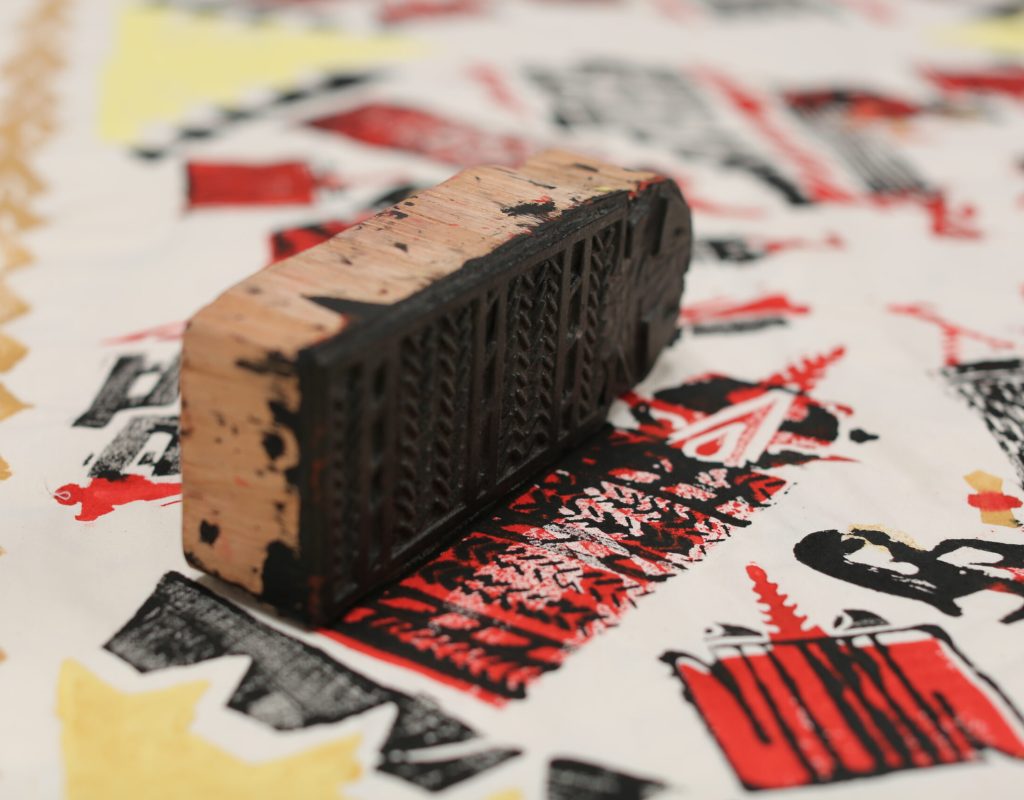
Textiles de la labor
Curator:
Data sheet:
Credits
DETALLES DEL PROYECTO
The textile installation consists of a cotton canvas 100 meters long by 90 centimeters wide, stretched on a table with a soft surface, 10 stamps carved in wood, acrylic paints and anilines.
The project revolves around the recovery and reinterpretation of the artisanal tradition of printing on fabric, specifically textile printing with wood blocks. At the same time, it explores the various possibilities of printing on fabric using contemporary tools. The piece is part of the series of works “Choreographies of Labor”, where Candiani has been exploring the emphasis on the choreographic performativity involved in manual and artisanal work. On this occasion, a group of volunteers print the fabric live.
The iconography comes from pre-Hispanic codices, specifically from the representation of a woman weaving on a backstrap loom and the representation of the measure of cotton that appear in the Matrícula de Tributos, that was a detailed record of the tributes that subjugated peoples were required to deliver to the Aztec rulers. These records included lists of goods such as textiles, food, precious metals, jewelry, and other valuable items that each region had to provide at set intervals, reflecting the economic organization and tribute structure of the empire, as well as the wealth and diversity of the resources under their control.
The pattern design also connects to the propagandistic style of Soviet textile production. The piece highlights the connection that existed between Soviet “dynamic dress” and the doctrine of Taylorism, which emphasized industrial gesticulation. Thus, the performative action is fundamental: a group of people work on a production line, performing the repetitive movement of stamping a roll of fabric. The stamping movements, which they execute in a synchronized manner, resemble a real production line. The printed fabric becomes a translation of Soviet textile production designs, creating contemporary images of women workers and craftswomen. The performance, together with the printed motifs, becomes an exploration of women’s current working conditions, set in confrontation with artisanal work.
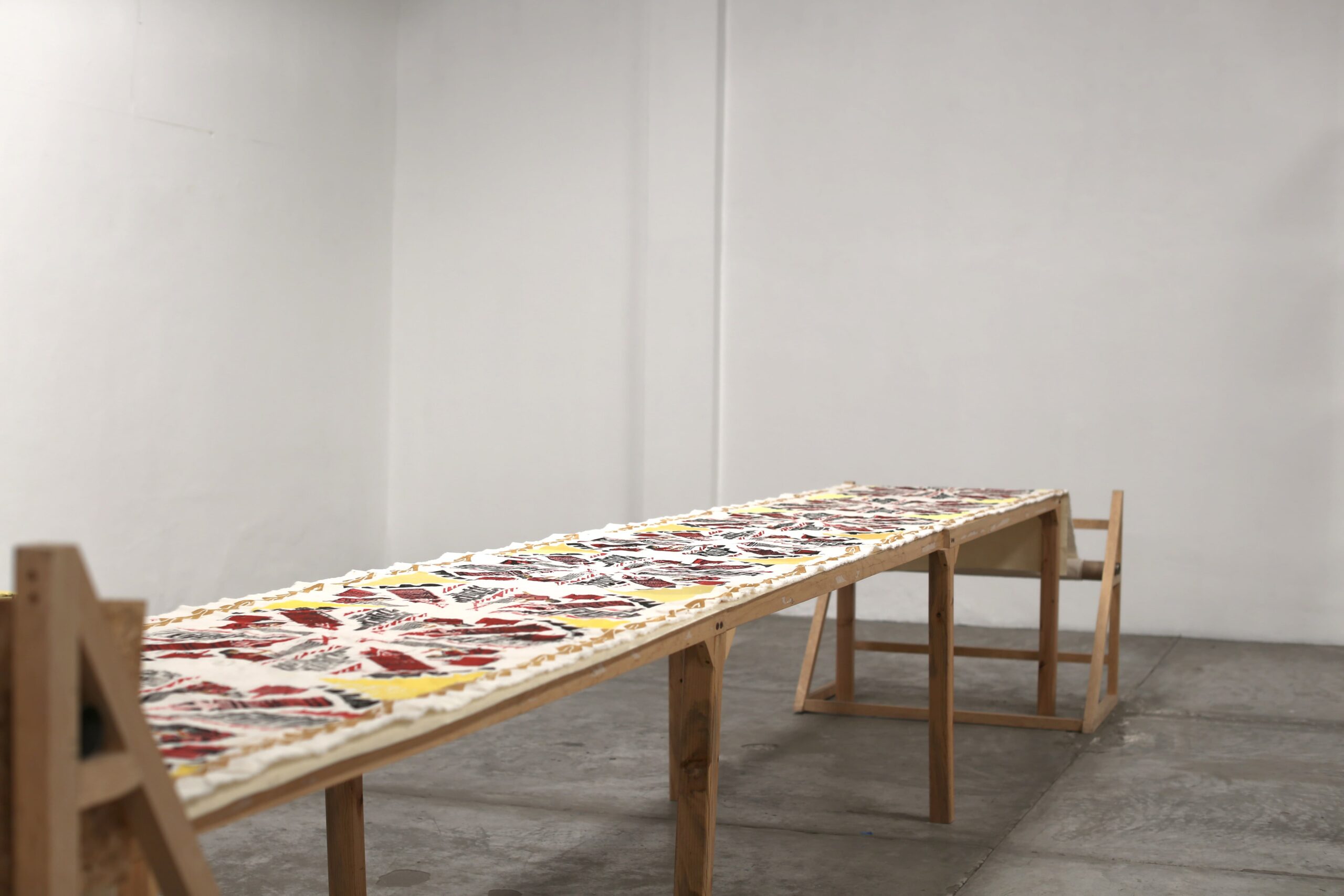
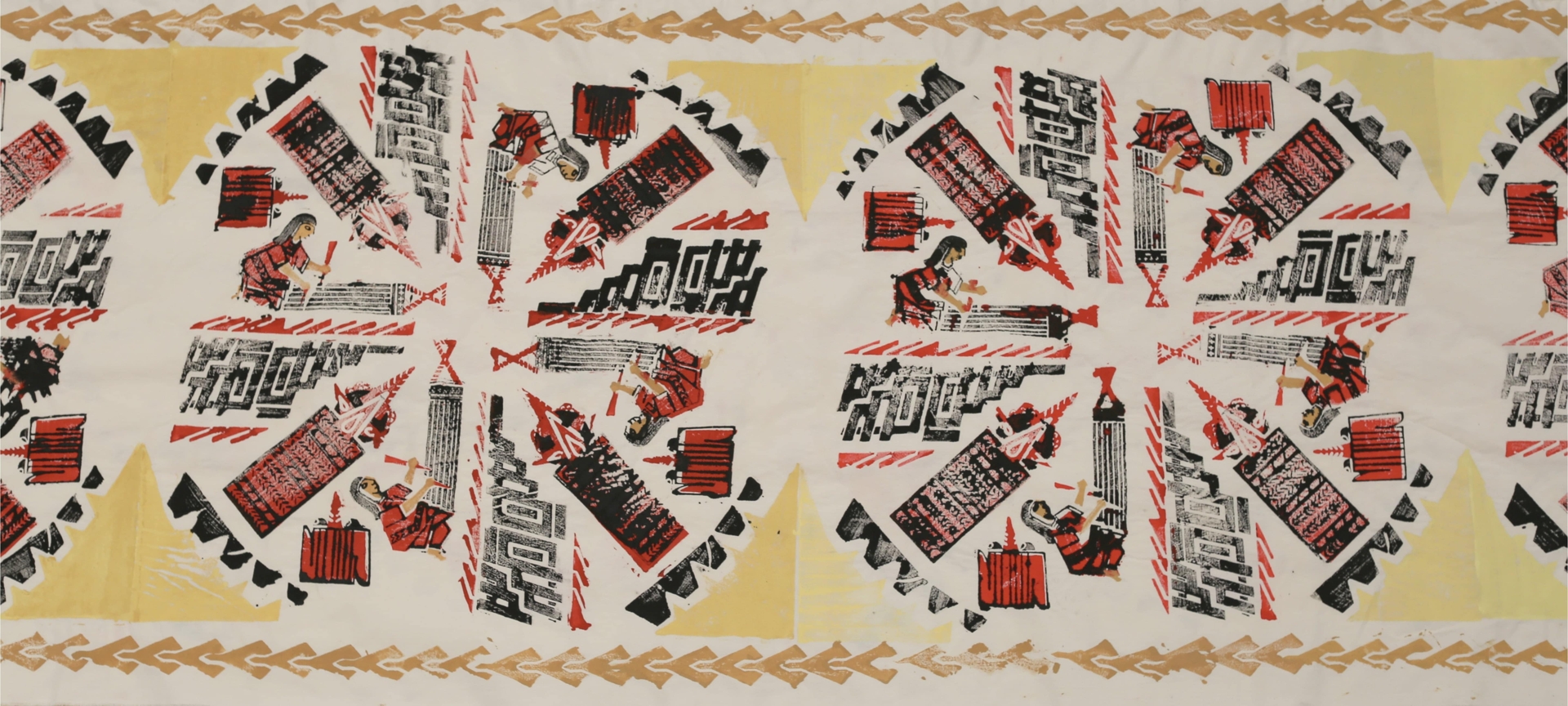

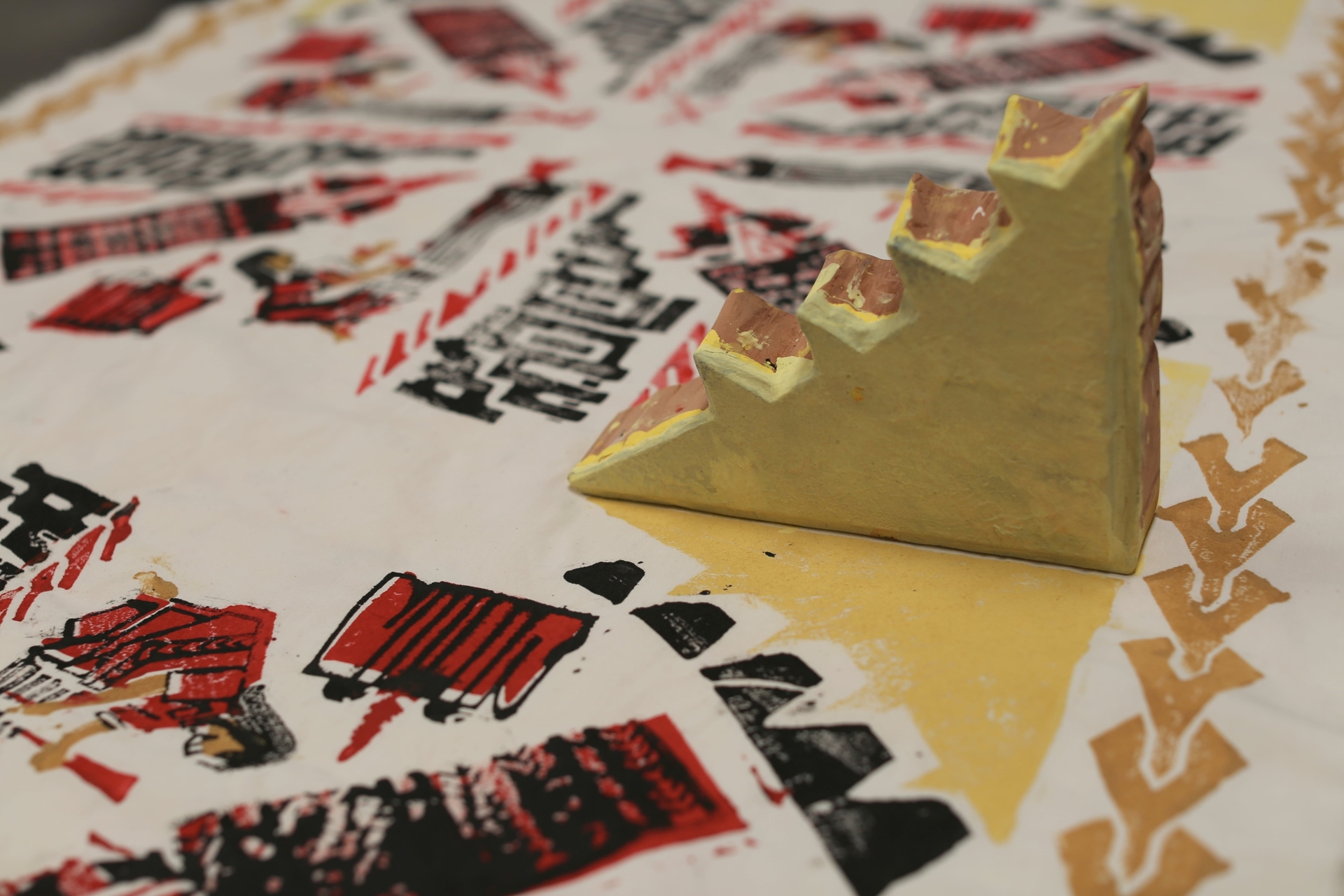
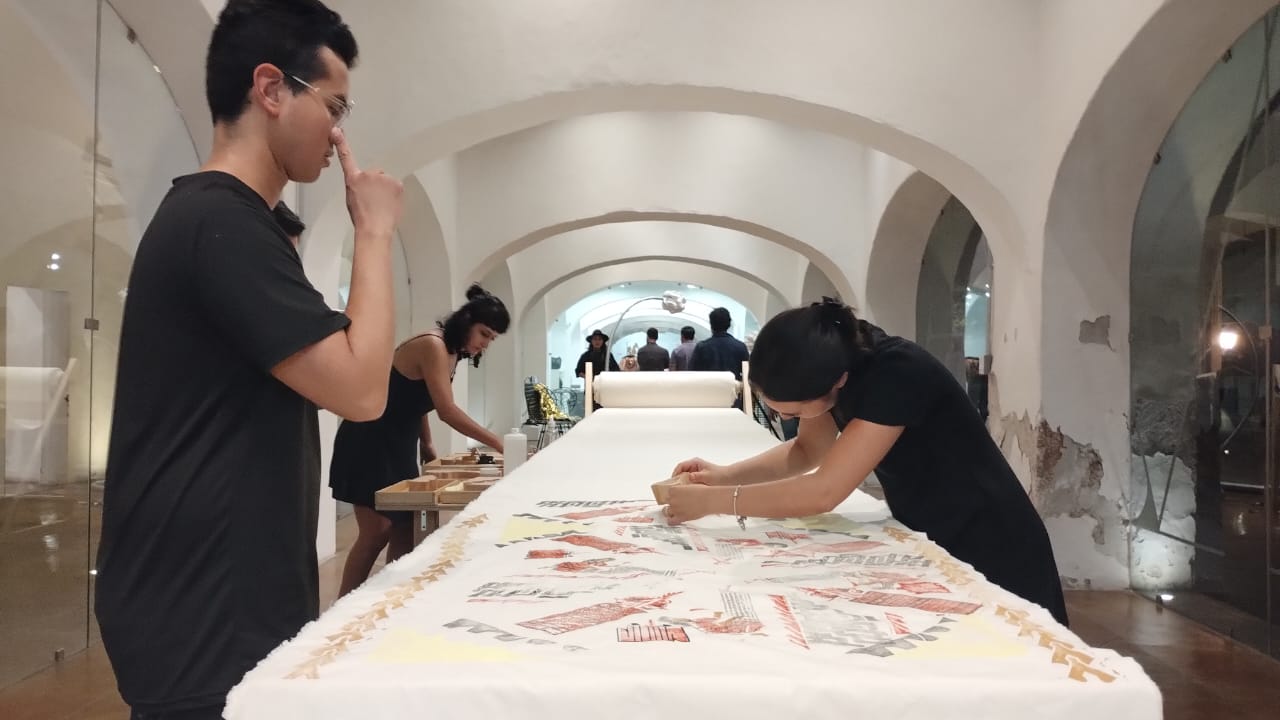
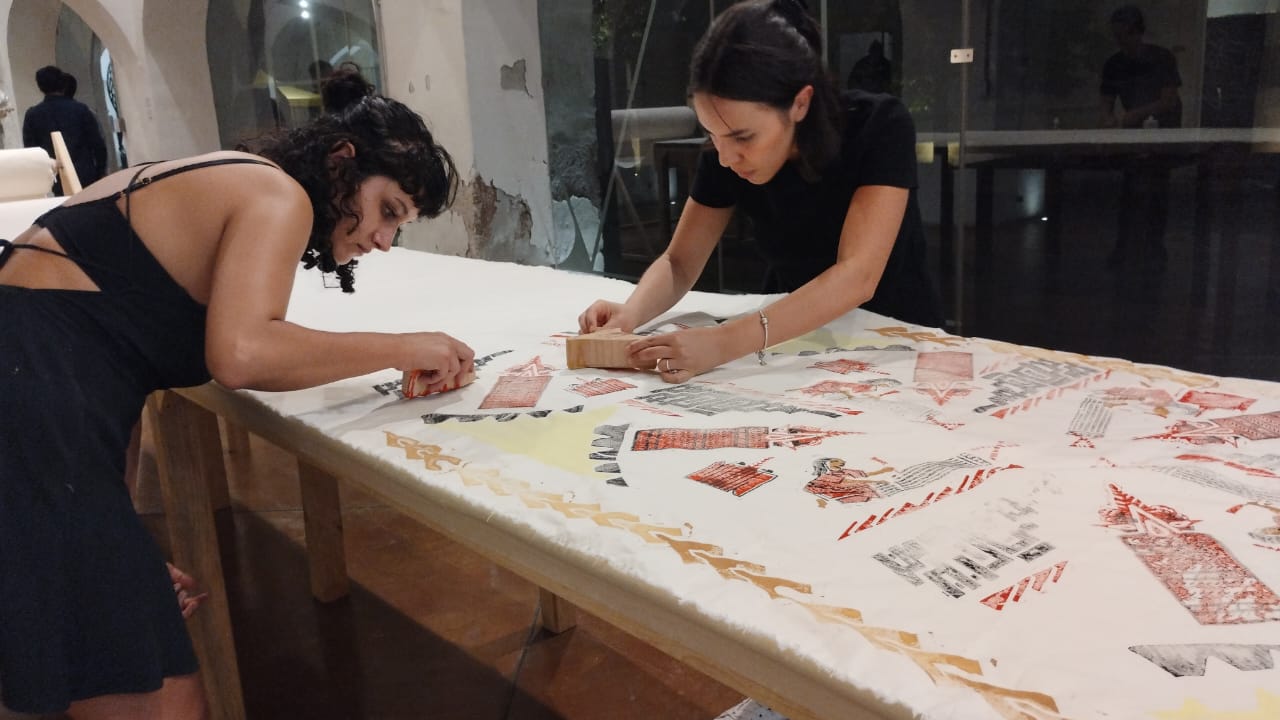
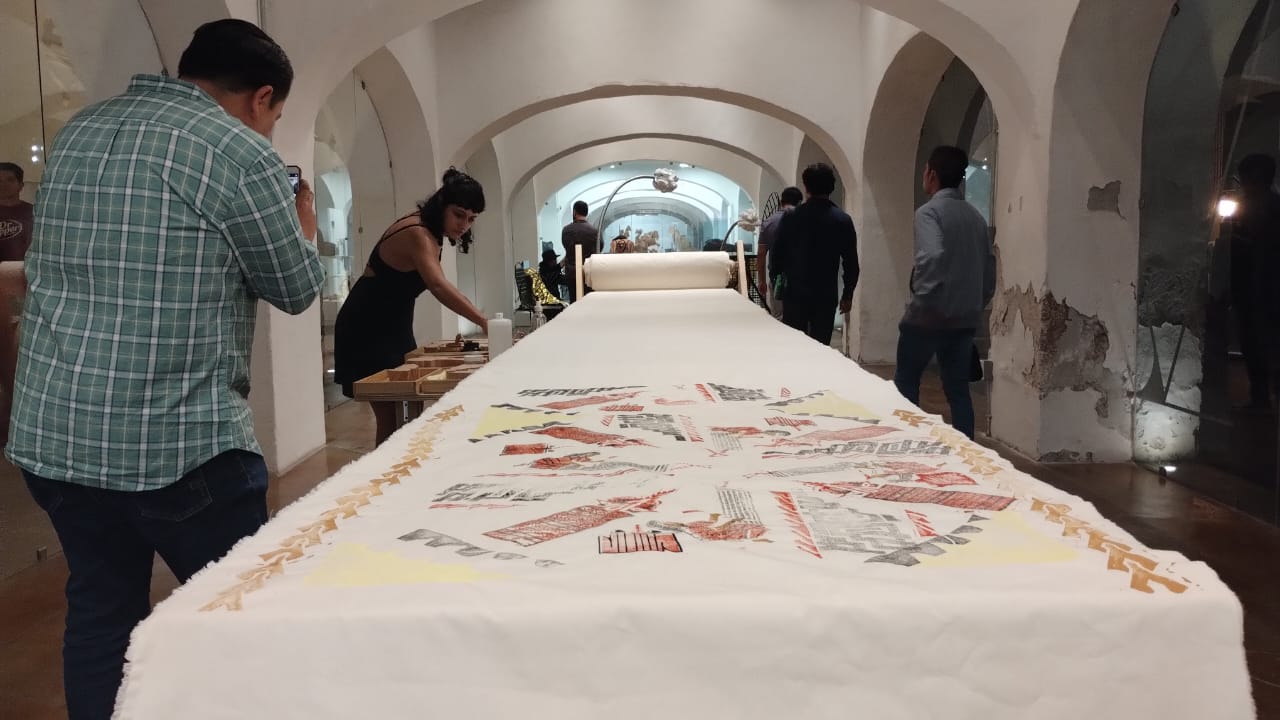
DETALLES DEL PROYECTO

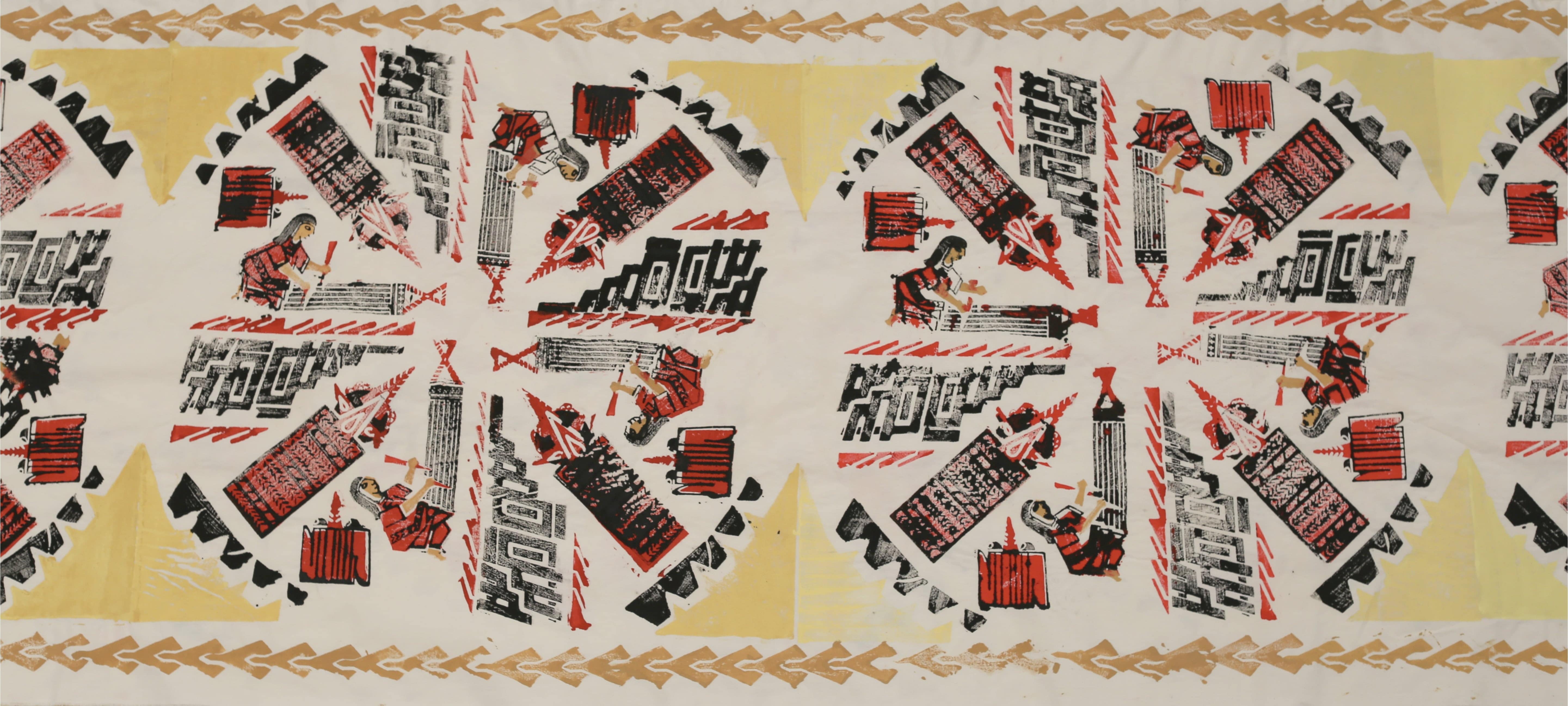

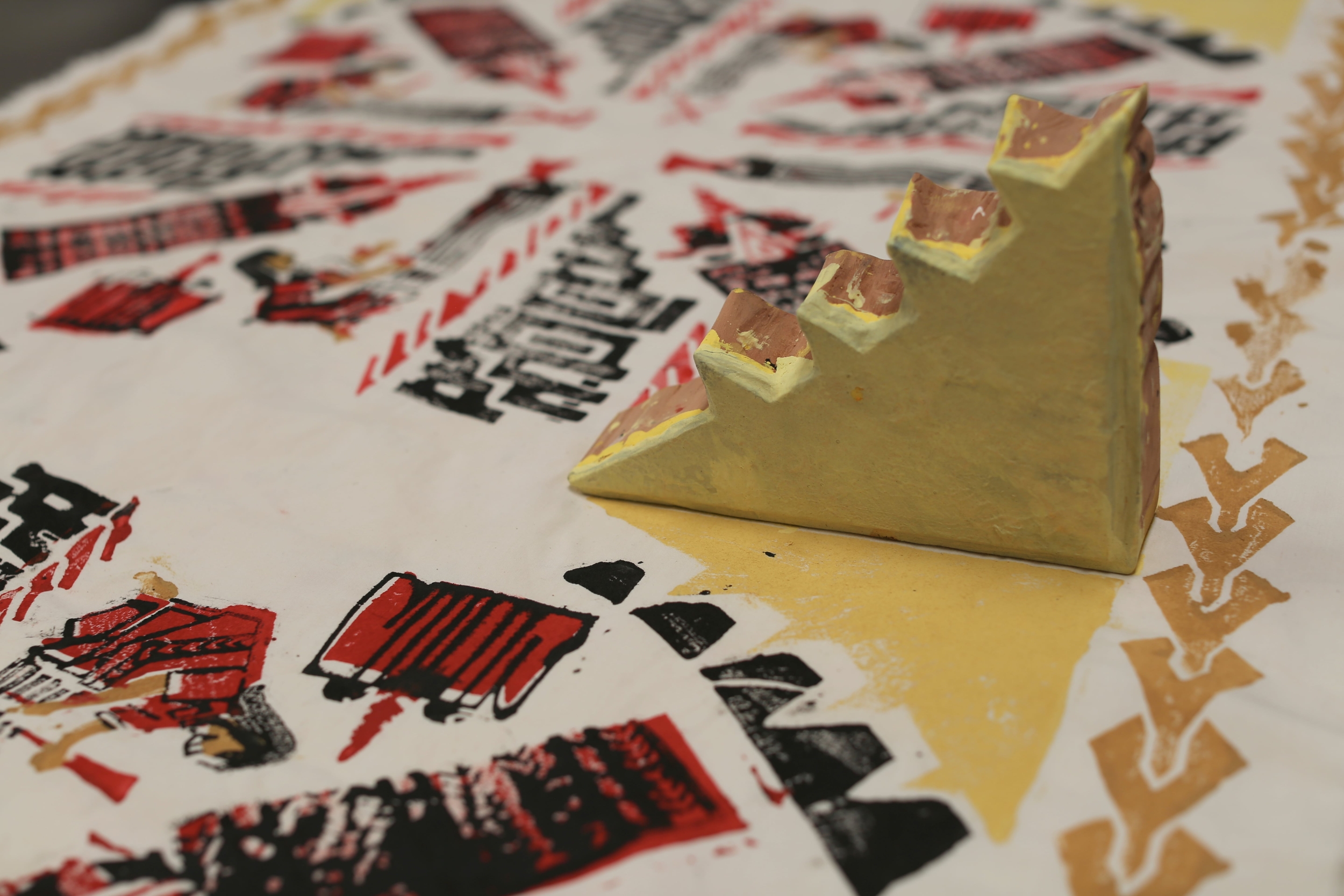



DETALLES DEL PROYECTO
DETALLES DEL PROYECTO
DETALLES DEL PROYECTO
DETALLES DEL PROYECTO
DETALLES DEL PROYECTO